Project News ·
Healthy landscapes and productive farms, a win for agriculture and the Reef
Across an area half the size of Sydney, improved grazing management practices are demonstrably boosting bottom lines while simultaneously enhancing water quality.
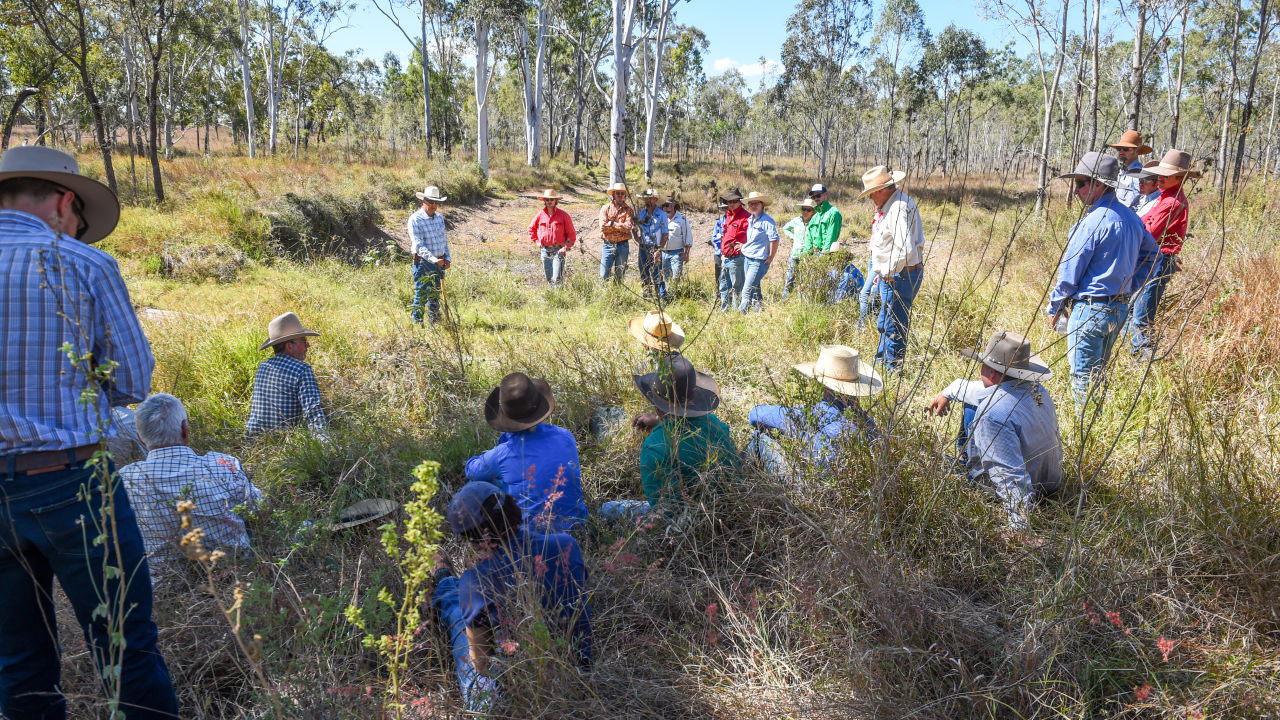
Land managers are reporting significant gains in both agricultural productivity and environmental health thanks to the five-year Bowen Broken Bogie (BBB) Water Quality Program.
Graziers have completed a range of activities to reduce fine sediment lost through runoff and help the land function more naturally from improving land management practices to rehabilitating major gully networks.
A healthier landscape supports improved soil water retention, stronger plant growth, greater biodiversity, and more consistent ground cover. These improvements boost productivity, enable graziers to produce more kilograms of beef per hectare reducing greenhouse gas emissions, and deliver both environmental and economic benefits.
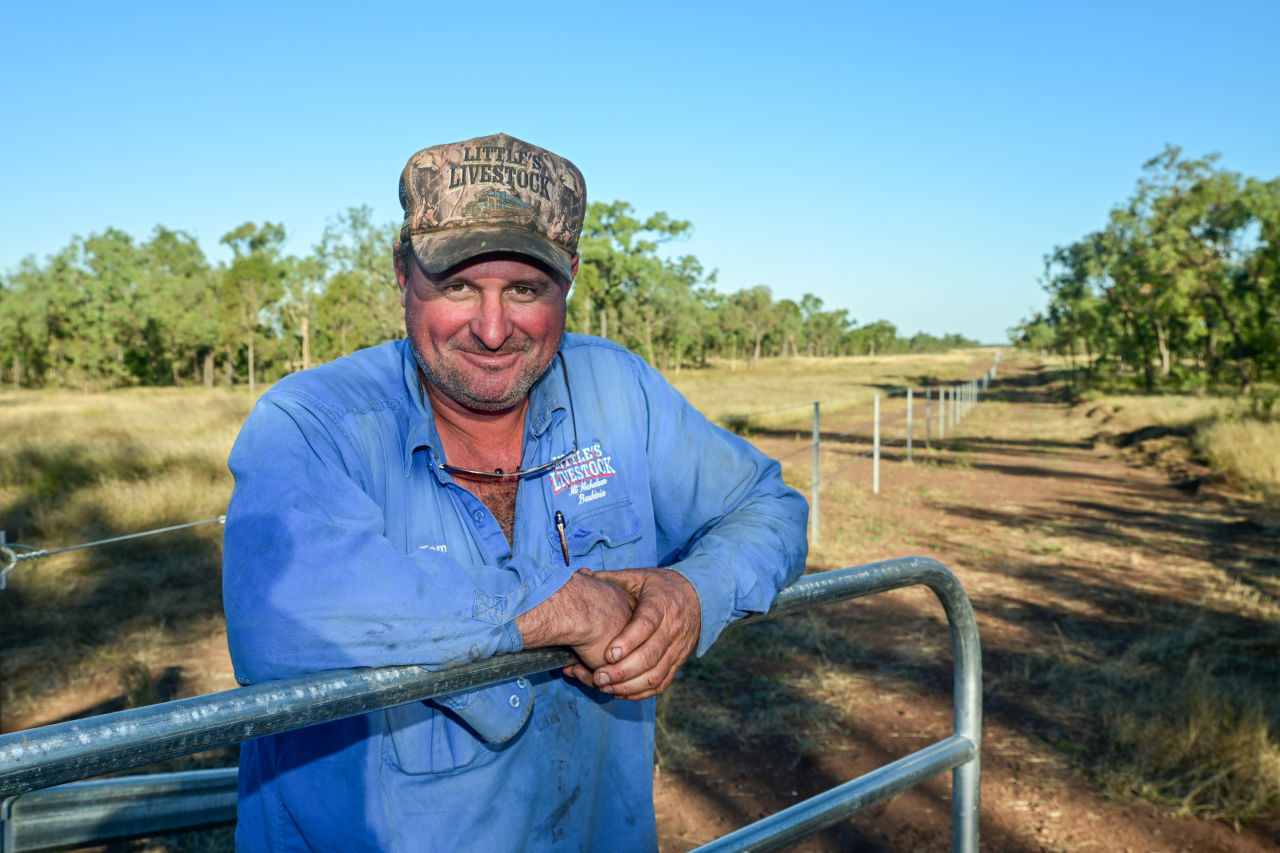
Tom Little's Birralee Station, where transformative infrastructure has supported improved grazing land management and long-term practice change. Image NQ Dry Tropics
Improved grazing practices
Through the Program, Burdekin graziers have completed 42 on-ground projects and improved management practices on 31 grazing properties in the priority Bowen Broken Bogie (BBB) sub-catchments. Work undertaken to improve grazing land management practices included 376 km of fencing, and 112 km of pipelines, 156 troughs, and 72 tanks for water management.
Strategic placement of fencing and water points enables pastures to be used efficiently through rotational grazing, moving livestock through a series of paddocks. This reduces uneven grazing pressure and supports “wet season spelling,” where pastures are rested at critical times so plants can replenish root reserves and set seed. The outcome is reduced sediment runoff into local waterways that flow toward the Great Barrier Reef lagoon.
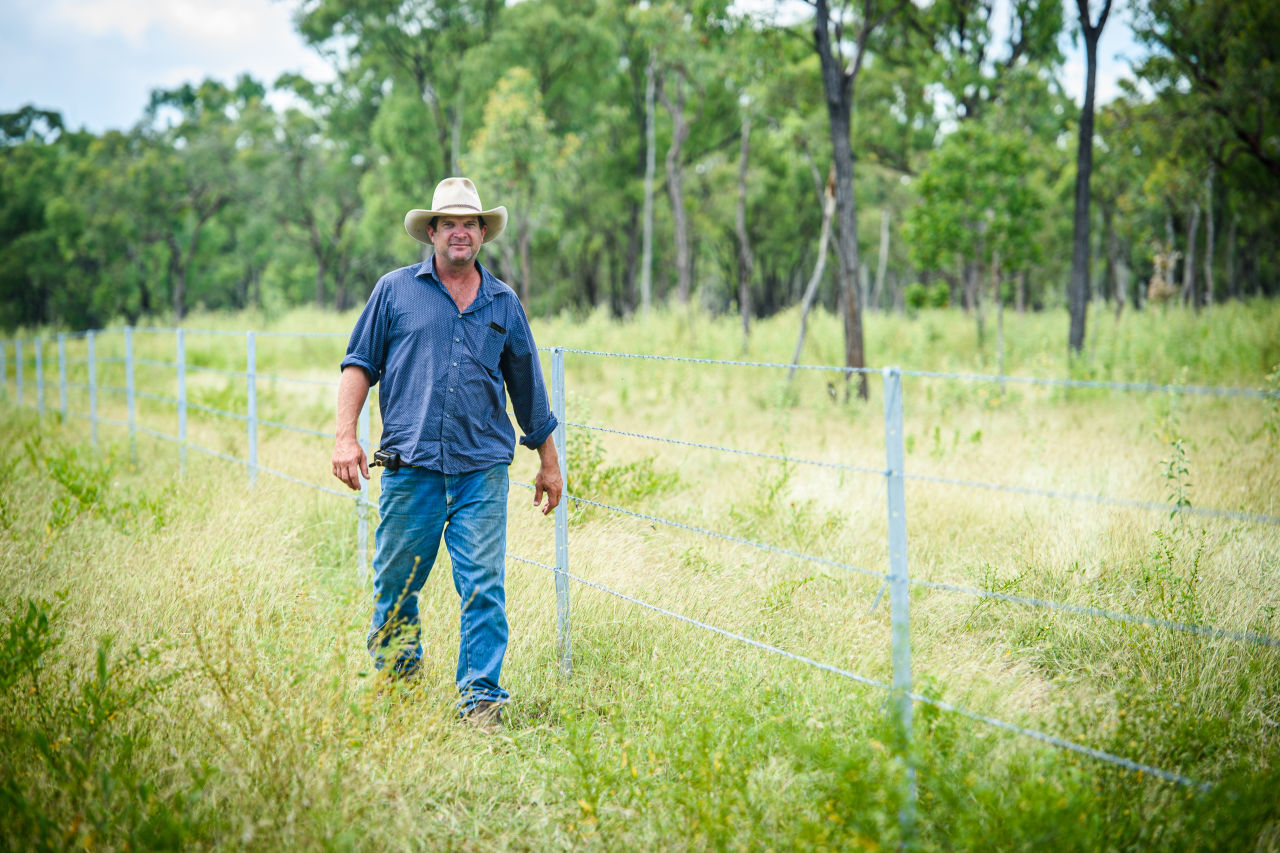
John Skinner of White Kangaroo Station installed fencing and water infrastructure to enable grazing rotation and increase rest periods for pasture to improve soil health and minimise runoff and erosion. Image NQ Dry Tropics
Collinsville grazier Brett Scott, Flagstone Station, said the project enabled him to install fencing and water infrastructure and adopt grazing practices to improve soil health and pasture diversity.
“A lack of fencing and water points meant we weren’t able to use pasture further away from Flagstone Creek,” he said.
“We installed fencing at the head of the creek to reduce grazing pressure along the creek banks, so these areas can now regenerate. We also established extra water points which allow us to rotate cattle around the property without the need to enter riparian zones for water.
Changing the grazing system on Flagstone has been the single biggest change to overall herd production. Rotational grazing and wet season spelling enables Brett to rest country and reduce overgrazing.
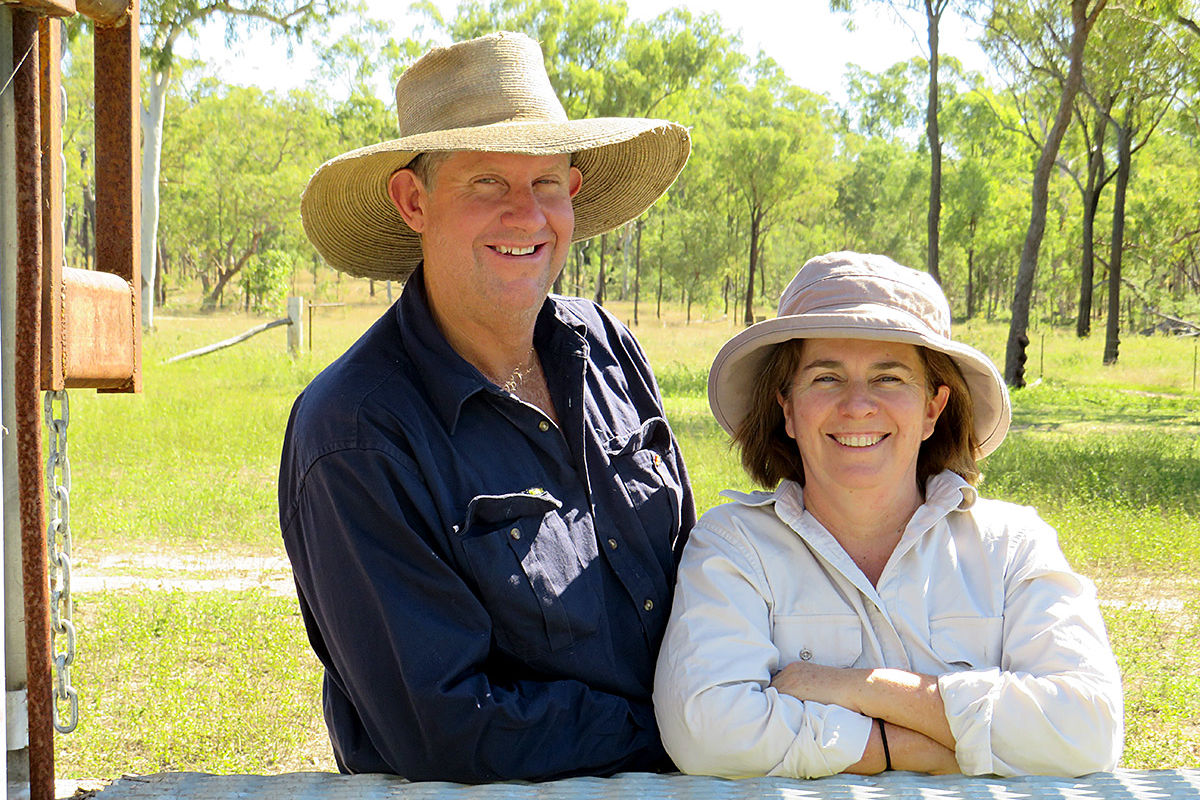
Flagstone Station graziers Brett and Siobhan Scott installed the fencing and water infrastructure needed to adopt grazing practices to improve soil health and pasture diversity. Image NQ Dry Tropics
Shared costs
Graziers have shown strong commitment to better grazing land management through substantial personal investment. While the Program contributed $1.3 million, graziers added $6.4 million in cash contributions, equivalent to $4.92 of grazier investment for every $1 invested by the Program.
More than 84,000 hectares of grazing land is now under improved management. This represents nearly 10 % of the Bowen Broken Bogie region and an area roughly half the size of Sydney.
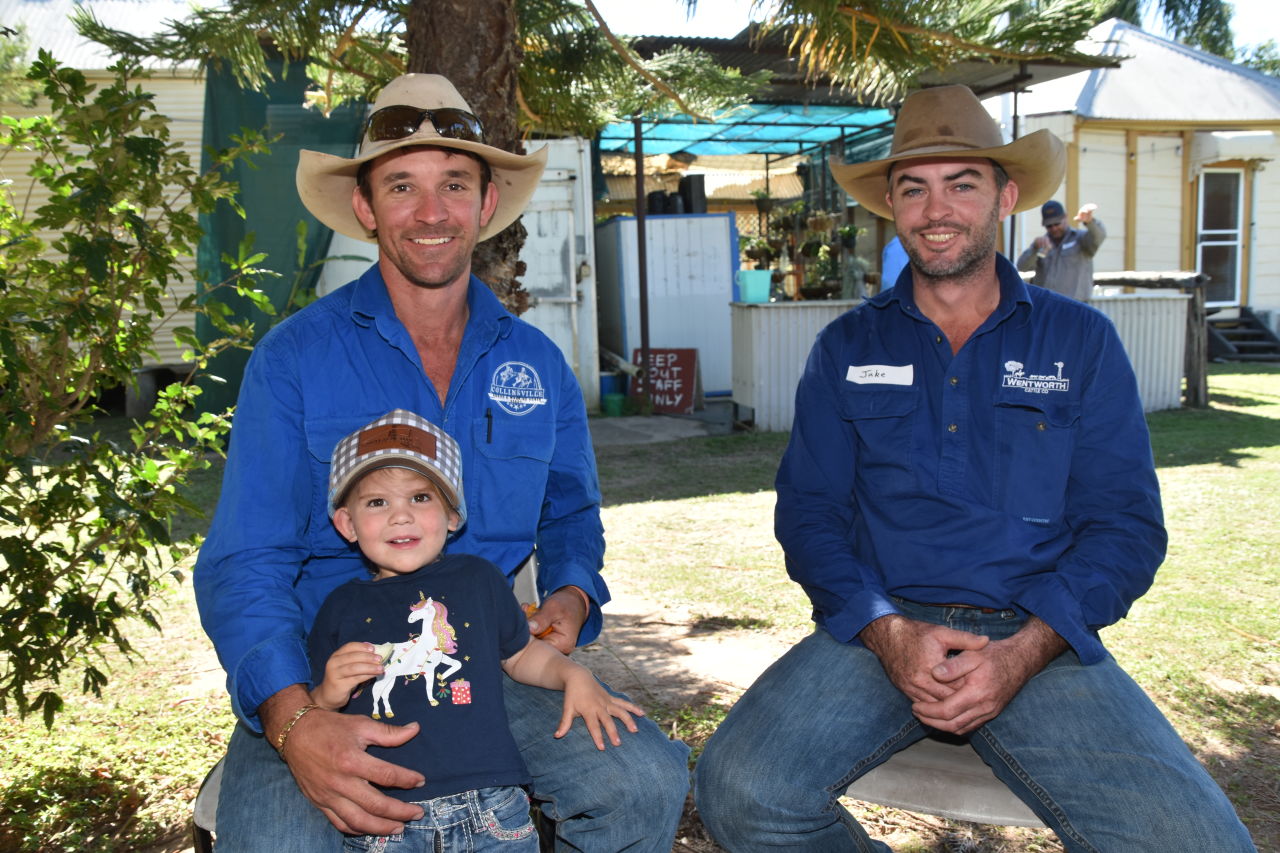
Collinsville grazier Clayton Braden, Gracie, and Strathalbyn Station manager Jake Halstead took the opportunity to hone their skills to reduce sediment from station tracks. Image NQ Dry Tropics
Small gully remediation
Small-scale remediation involved constructing leaky weirs, a low-cost, simple solution that prevents minor gullies from becoming major erosion channels. The weirs slow the flow of water and trap sediment, rebuilding the gully floor. More than 635 hours of earthmoving were required to build 66 leaky weirs across 54 small gullies.
Trainees from the Indigenous employment group Three Big Rivers worked with landholders to implement this work, delivering direct support for water quality outcomes while creating meaningful employment opportunities for Indigenous trainees.
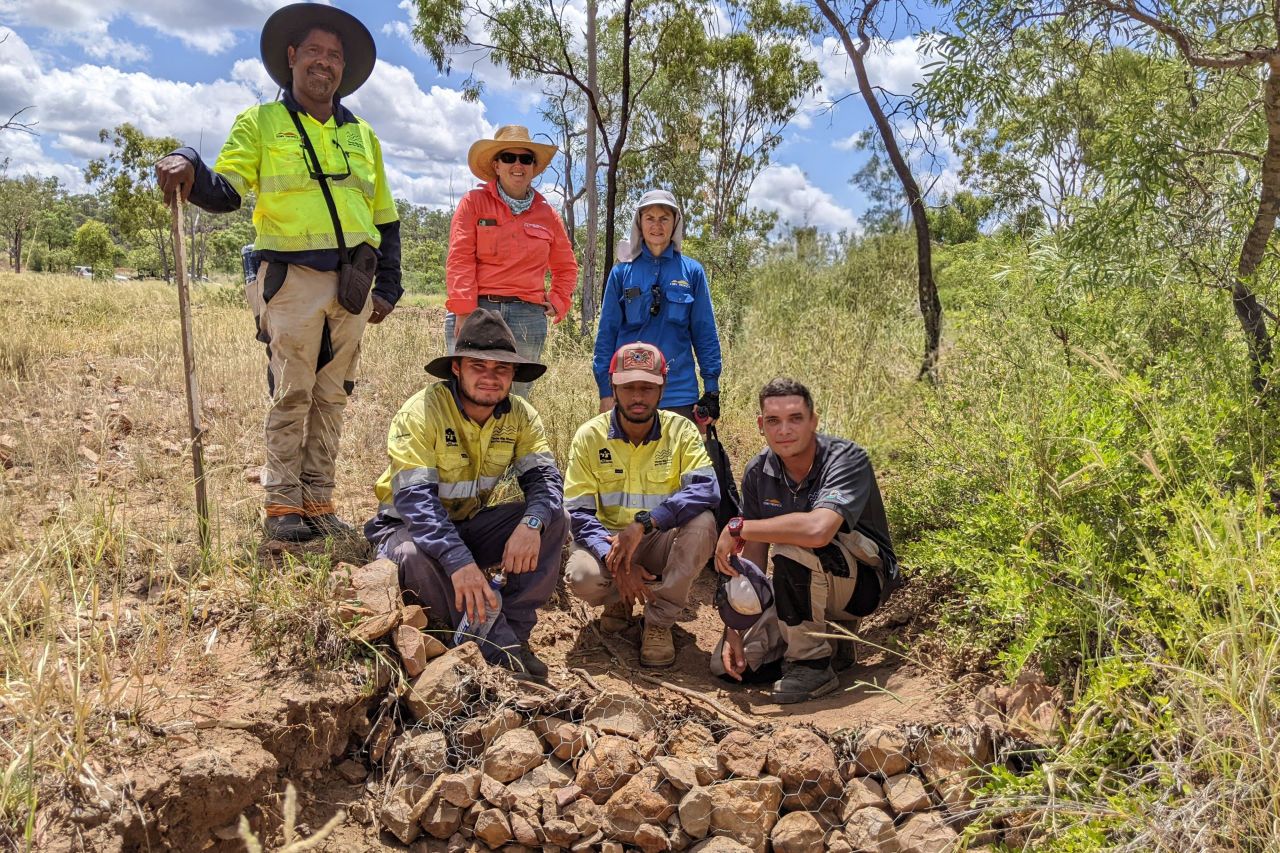
Trainees from Indigenous employment group Three Big Rivers worked with landholders to implement small-scale gully remediation. Image NQ Dry Tropics
Scottville grazier Graham Gordon undertook small-scale gully works to slow water on his property with the goal of improved soil and pasture health and reduced sediment loss. The project has helped Graham access technical expertise and resources to halt progress of an active gully that that was so large and deep it had cut down to the sedimentary bedrock.
Treatment works included a horseshoe-shaped level rock weir with spreading structures above the gully heads to slow and spread water, and to reduce the volume and velocity of water entering the gullies.
“We’re taking a whole-of-property approach to fixing gullies. Being a smaller property, 222ha, means we’re able to do that,” Graham said.
“If you can block a gully and hold that water back in the country, you’re going to keep water and soil on the paddock, and that’s a whole lot better than seeing it run into the creek.
“It’ll improve our topsoil depth and soil-water-holding capacity to enable even grazing of our pastures.”
Temporary fencing has been erected to exclude cattle from the project site to allow it to stabilise.
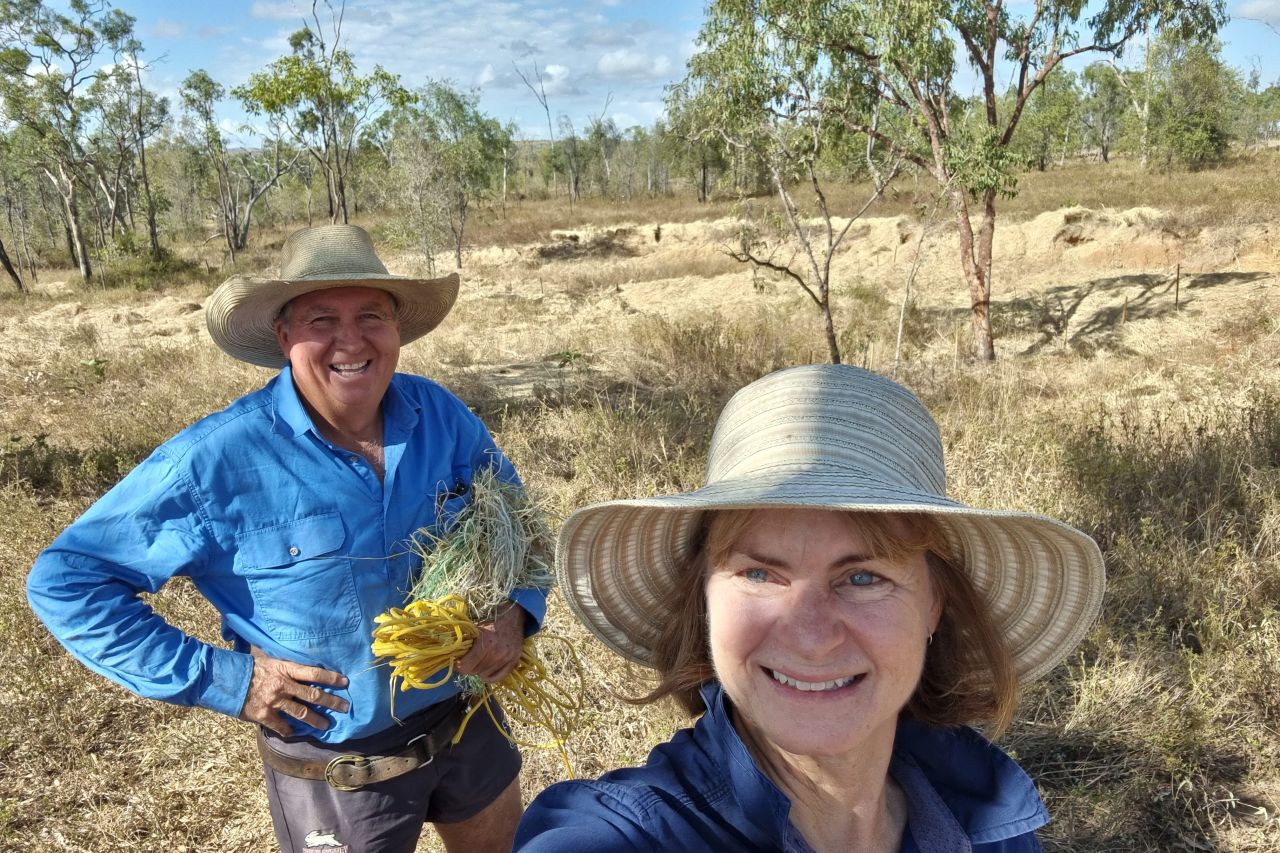
Scottville grazier Graham Gordon and Soils Conservation Officer Bernie Claussen at leaky weir site. Image NQ Dry Tropics
Landscape Restoration
Through a major landscape restoration program, six large multi-gully networks were rehabilitated and one large streambank restored significantly reducing sediment lost through erosion.
Landscape restoration at Station Creek on Havilah Station near Collinsville reinstated 1,800 metres of severely eroded streambanks. Works aimed to reduce land loss, stabilise water flow, and minimise downstream sediment impacts. Vertical banks were reshaped, with rock chutes and bunds managing overland flow through gullies. Over 1,900 locally sourced timber piles were installed to slow water and trap sediment, aiding riverbank repair and protecting vegetation.
Around 2,850 native trees were planted to stabilise soil and prevent future erosion, supported by a solar-powered irrigation system with 128,000 litres of water storage and 13 kilometres of piping. Cattle exclusion fencing was also installed to support vegetation growth and manage grazing pressures.
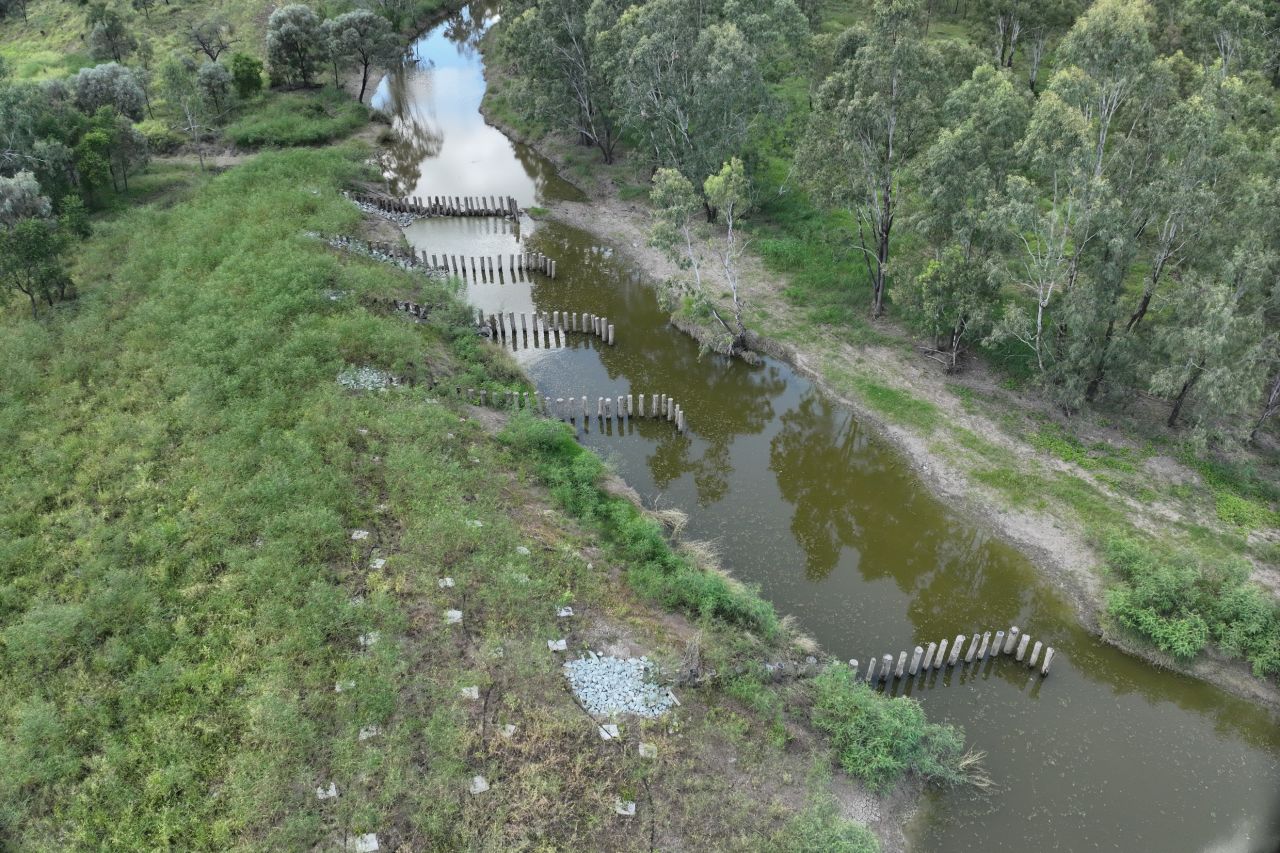
1,800 metres of severely eroded streambanks restored at Station Creek on Havilah Station near Collinsville. Image Neilly group Engineering
Twenty-six hectares of eroded gullies at Belmore Downs have been rehabilitated in two stages. Works included land reshaping, bunds, rock chutes, batter drains, porous rock check dams, soil improvement, fencing, revegetation, and grazing management.
Designed to be cost-effective and resilient to 1-in-50-year rainfall events, the project reshaped active gullies and diverted overland flow using bunds and rock chutes. Check dams slowed water and encouraged soil deposition. Soil testing guided targeted amelioration, while native revegetation based on ecological assessments, helped stabilise soil, reduce erosion, and support long-term landscape resilience.
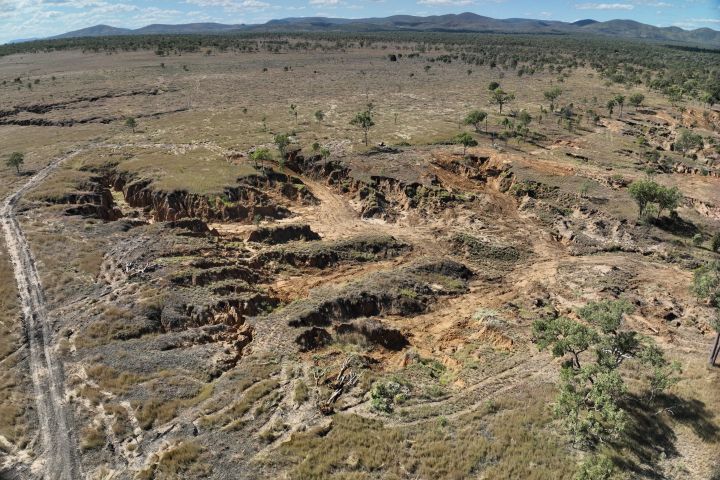
Belmore Downs Gully 5 before remediation
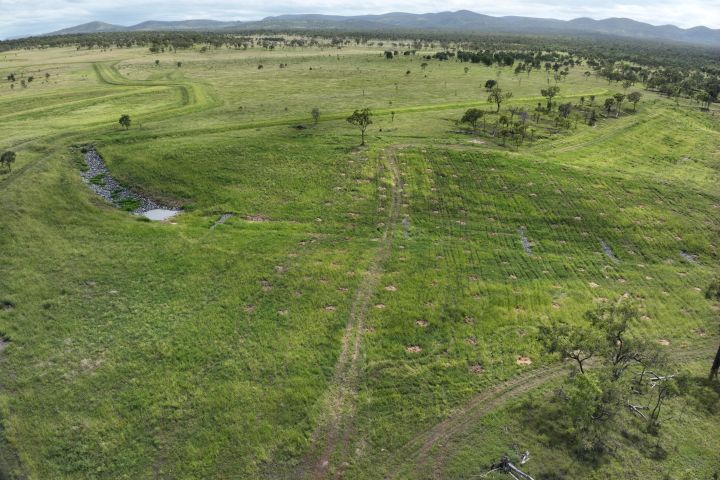
After remediation. Neilly Group Engineering
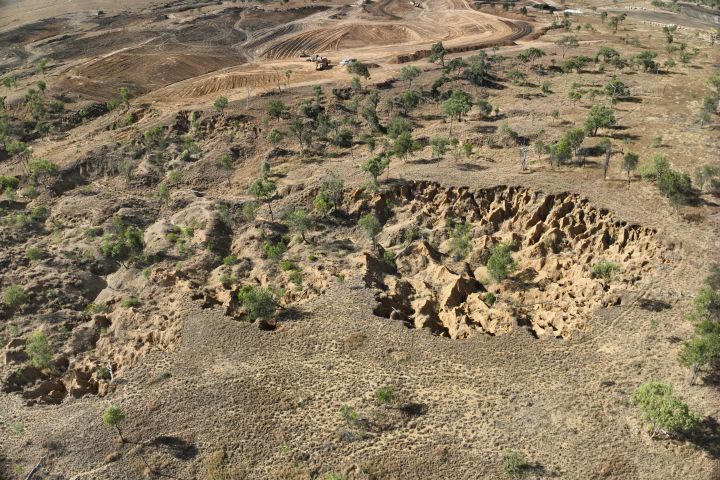
Belmore Downs Gully 3 before remediation
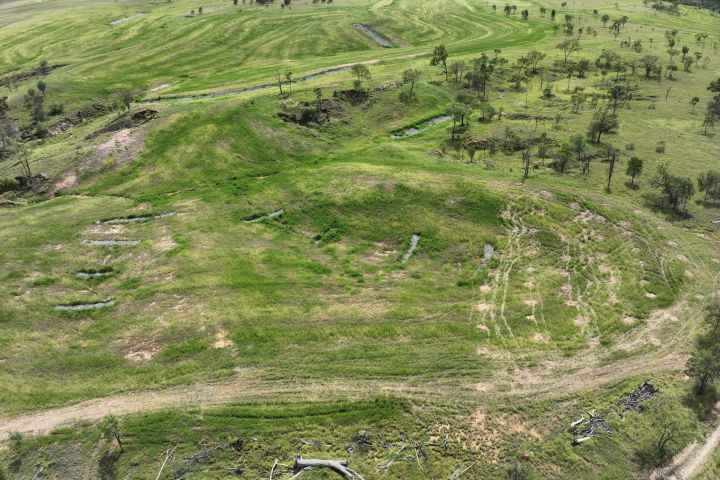
After remediation. Neilly Group Engineering
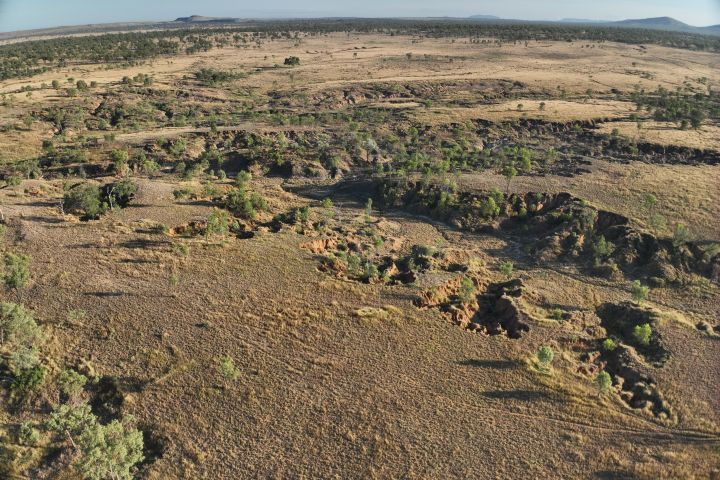
Belmore Downs Gully 1 before remediation
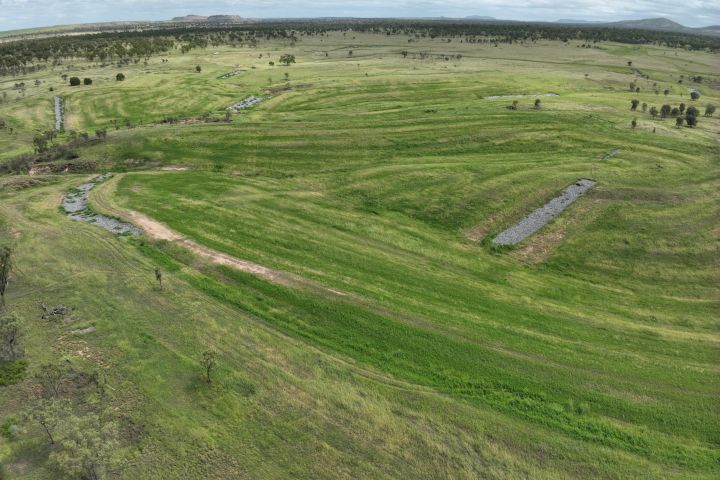
After remediation. Neilly Group Engineering
On the 20,800 hectare Weetalaba Station, an old alluvial fan had eroded into a deeply incised gully system, cutting a shortened path down to Rosella Creek, lowering the flowline and eroding into productive agricultural land.
Grazier Reid Muirhead completed a landscape rehydration project to rehabilitate this erosion hotspot and safeguard production.
Using natural materials, a leaky weir, earth walls, diversion banks, and rock chutes, water movement across the landscape was slowed and infiltration rates were promoted, enhancing pasture growth.
“Early indications are positive. Prior to intervention, water was moving too fast across the landscape because of poor infiltration, lack of ground cover and deep-rooted perennials,” he said.
“This has been rectified by a simple intervention. Along with grazing management to improve ground cover, promote multiple species pasture growth, and improve soil health, this will once again become productive country.”
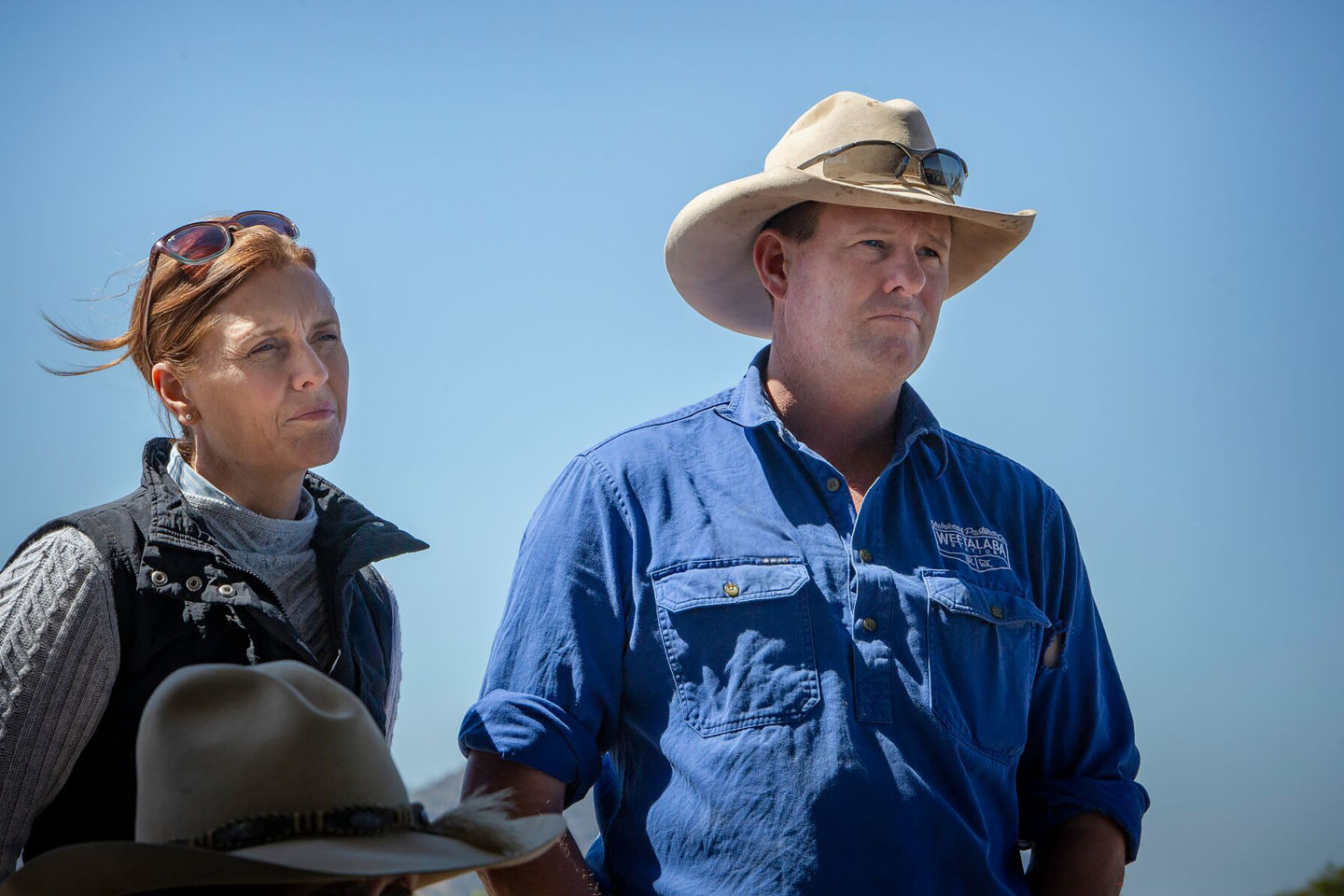
Julie and Reid Muirhead of Weetalaba Station completed a landscape rehydration project to rehabilitate an erosion hotspot cutting a shortened path down to Rosella Creek. Image NQ Dry Tropics
Enhanced skills and knowledge
A total of 42 events delivered new skills and information to 766 graziers and 300 industry attendees. The sessions covered property planning, soil health, pasture species identification, animal health, and herd management.
Collinsville grazier Reid Muirhead, Weetalaba Station, hosted a soil health masterclass headlined by internationally renowned soil ecologist and founder of Amazing Carbon, Dr Christine Jones. He wanted to learn more about how pasture management could affect pasture diversity and productivity and the extent to which they nourished soil organisms.
“It was interesting to learn how these [soil] organisms are important to the cycling of nutrients and the maintenance of good soil structure, which, in turn, can have enormous positive effects on plant growth and animal production,” Reid said.
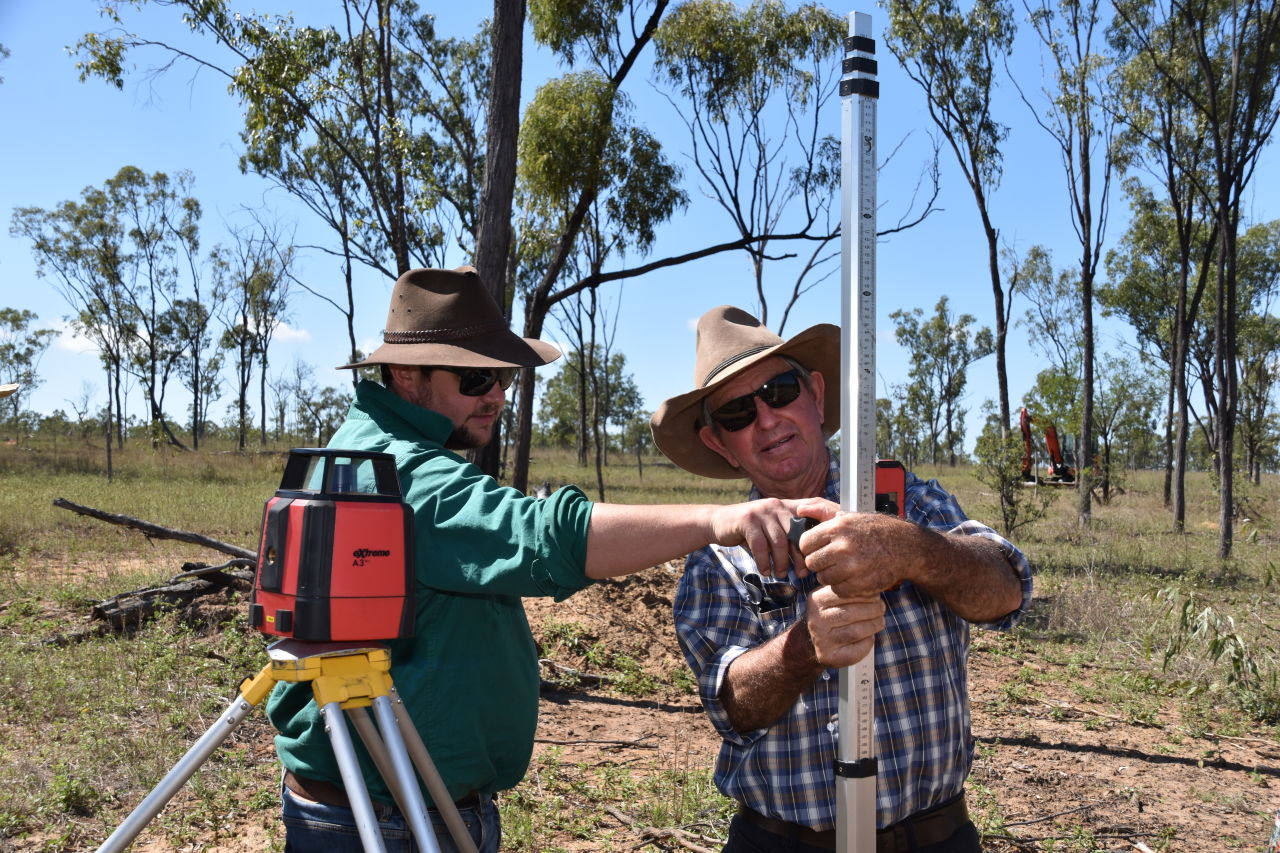
Grazing Field Officer Brad Martin and Bowen grazier Dennis Bolton undertake basic surveying for whoa-boy construction to reduce road erosion. Image NQ Dry Tropics
Improved water quality
The Reef Trust Partnership between the Australian Government’s Reef Trust and the Great Barrier Reef Foundation invested $26 million to improve the resilience of the Great Barrier Reef through targeted water quality improvements in the BBB catchments.
Natural Resource Management organisations NQ Dry Tropics and Greening Australia delivered four projects under the Program, achieving an estimated annual reduction of 105 kilotonnes of fine sediment, equivalent to 5,250 dump truck loads of sediment kept from entering the Great Barrier Reef each year.
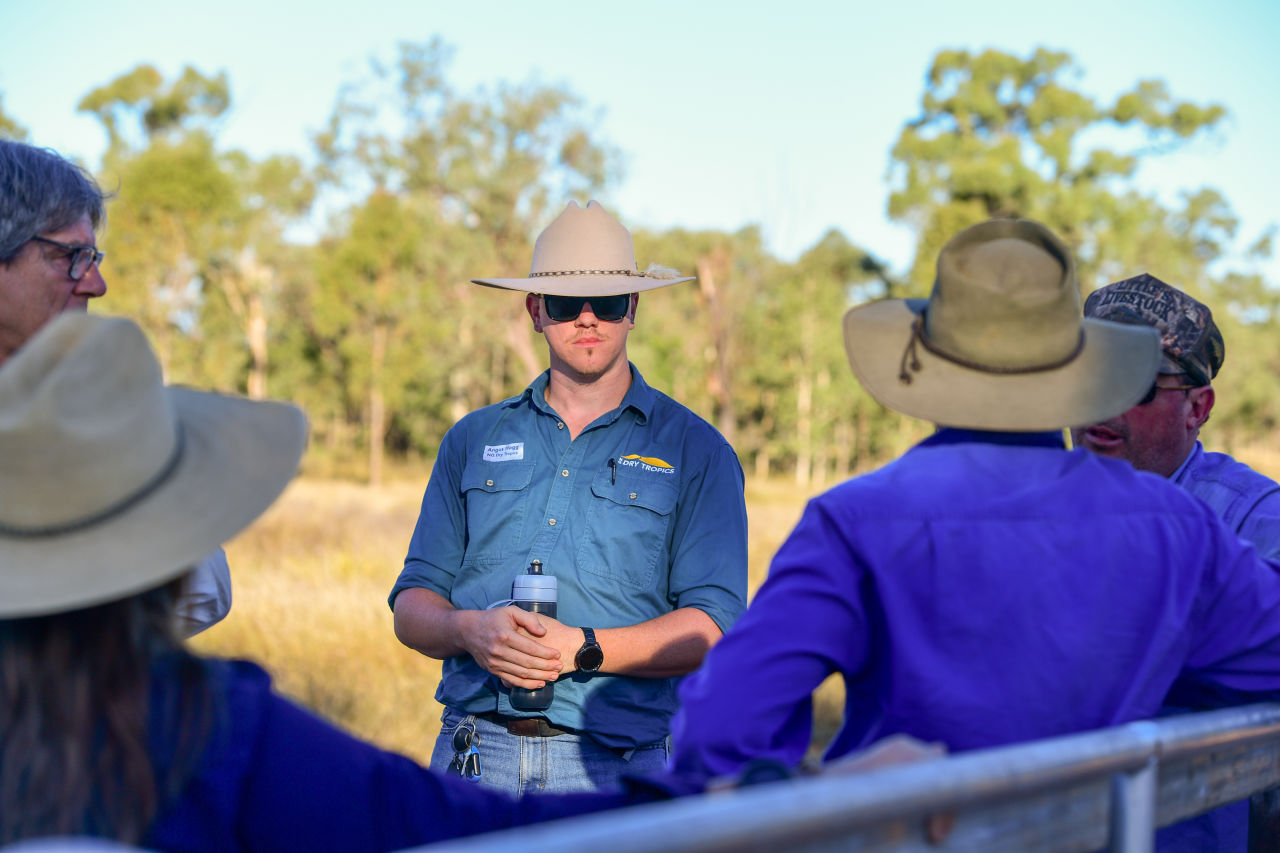
NRM Project Manager Angus Hogg discusses grazing land management projects at Biralee Station with field day participants. Image NQ Dry Tropics
More stories from the BBB Water Quality program
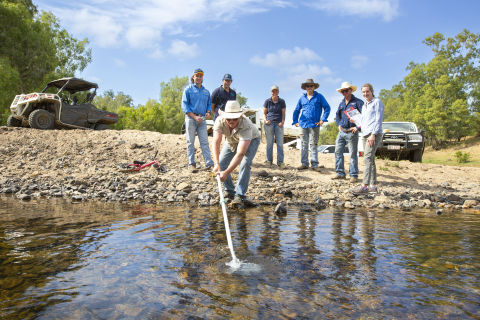
Project News ·
Citizen scientists support water quality research
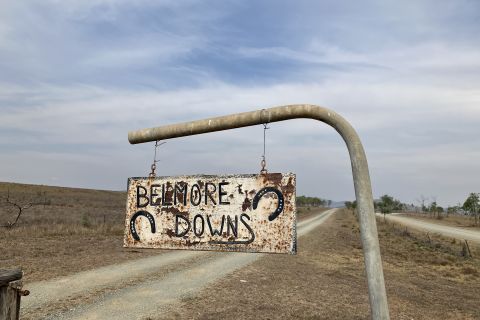
Project News ·
Landscape restoration stops significant sediment losses
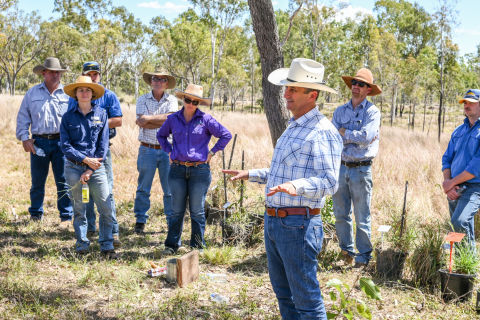
Project News ·
Working with nature to restore degraded landscapes
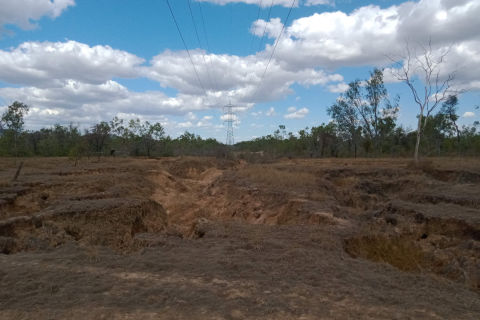
Project News ·
Fixing a problem 50 years in the making
#Related
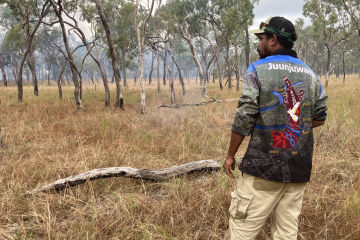
Project News ·
Community at the forefront of Reef water quality protection

Project News ·
A nature-based solution for a healthier Reef

Project News ·




